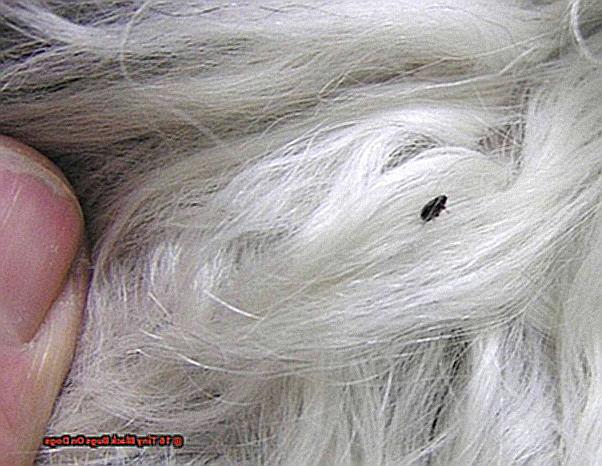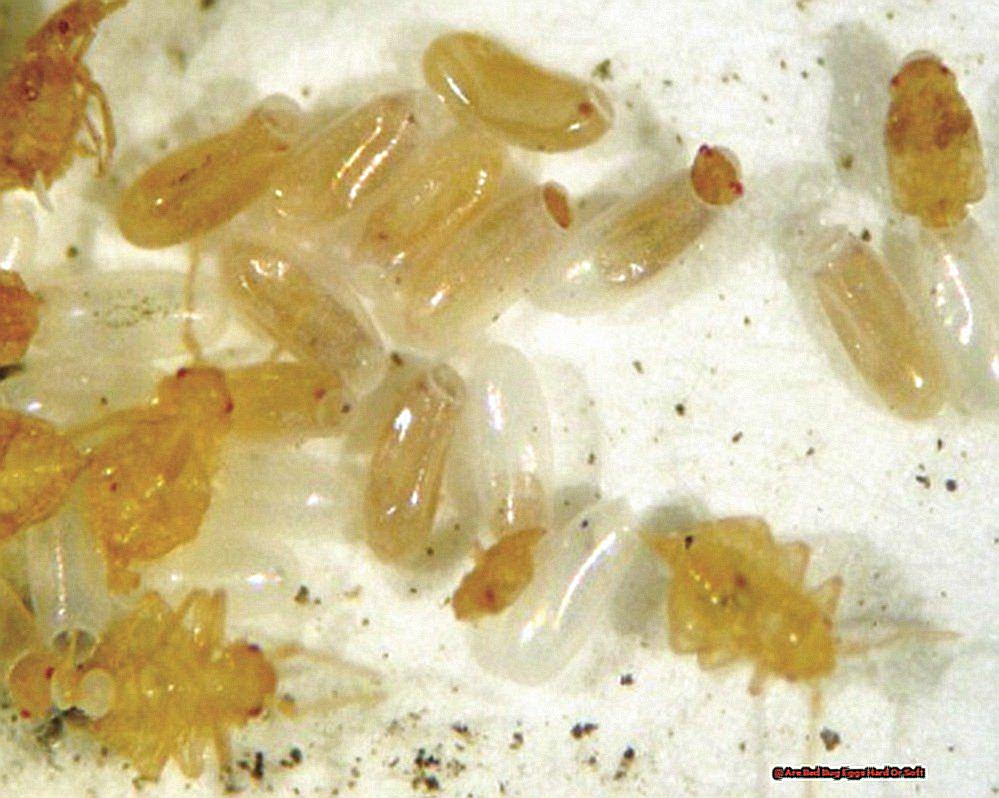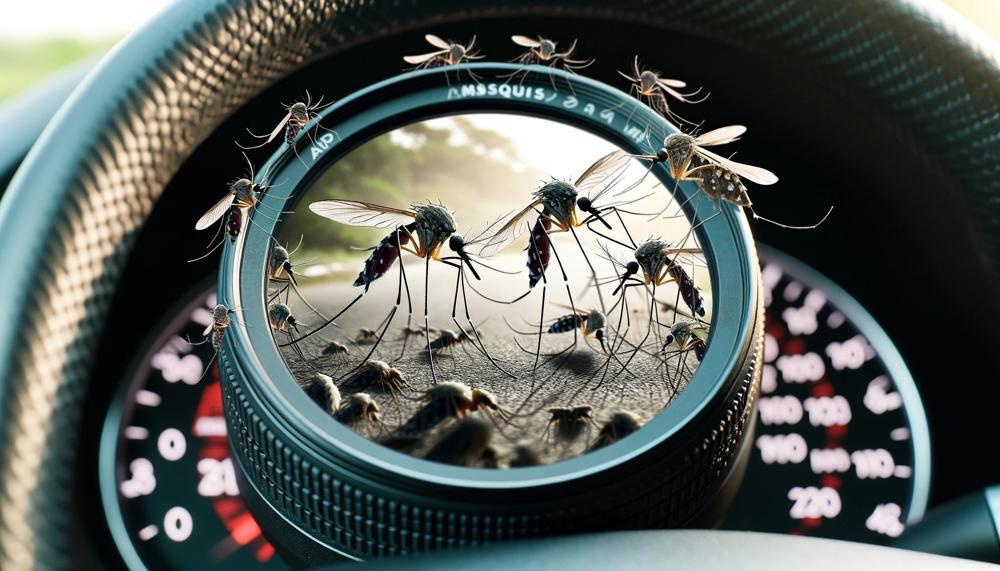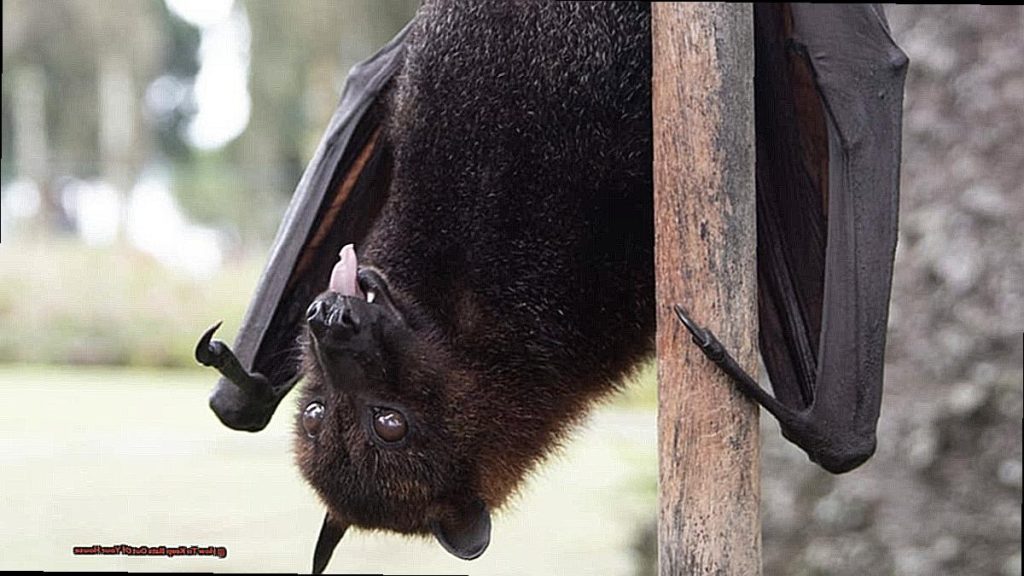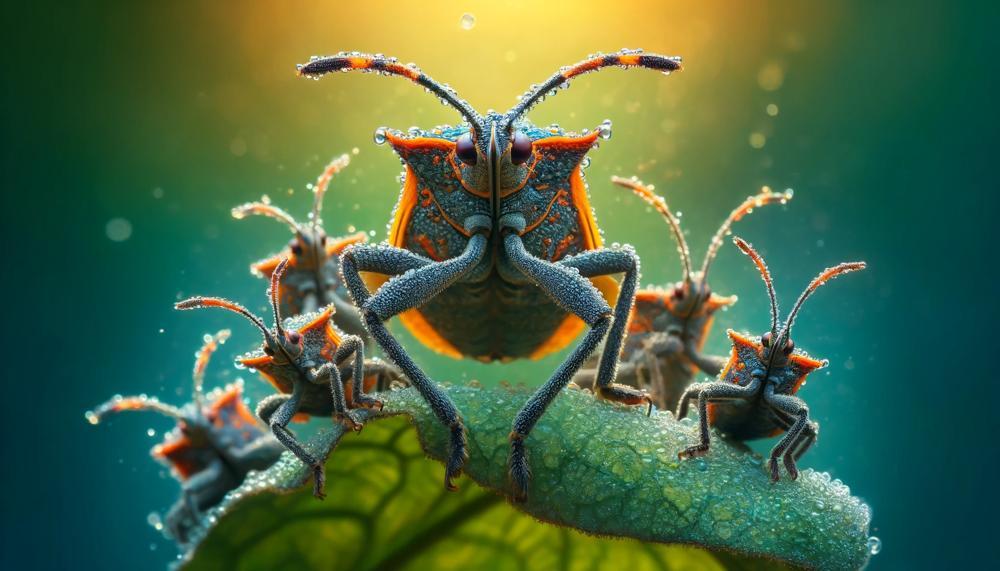As dog owners, we strive to provide our furry friends with the best of care.
But no matter how diligent we are, our pups can still encounter some unwanted visitors. One common issue that many dogs face are tiny black bugs that can be found crawling on their fur.
These pesky pests may seem insignificant, but they can actually cause a lot of discomfort and potential health problems for our beloved pets. In this blog post, we’ll take a closer look at 16 tiny black bugs that can be found on dogs and what you need to know about them.
So, grab your pup and join us as we explore this intriguing topic together.
Table of Contents [show]
Black bugs or black specks on dogs
Yet, there may be moments when we spot tiny black creatures or specks on our beloved dogs’ fur. These pesky bugs can cause irritating itching and discomfort for our canine friends. However, what exactly are these black bugs and how can we safeguard our dogs from their effects? Let’s delve into some common varieties of black bugs that can affect dogs in the United States.
Black Carpet Beetles:
These oval-shaped insects are dark brown or black in color and are commonly found across North America. They typically reside outdoors on plants but can also make their way into our homes. While they do not pose a threat to humans, they can cause damage to household items such as fabrics, carpets, and furniture. If your dog has come into contact with these bugs, you may notice red itchy bumps on their skin.
Asiatic Cockroaches:
Originally hailing from Southeast Asia, these cockroaches have now spread globally and are frequently found in homes. They have an insatiable appetite and can transfer harmful bacteria into our living spaces, posing a risk to both humans and pets. If you suspect your dog has been exposed to Asiatic cockroaches, it is best to seek advice from a veterinarian for proper treatment.
Vine Weevils:
These black insects are prevalent in North America and thrive in gardens. They feed on over 100 types of cultivated and wild plants, causing substantial damage to crops and gardens. If your dog spends time in the garden, they may encounter these bugs. Keep an eye out for wilted or browning leaves, as this could be an indication of a vine weevil infestation.
Black Carpenter Ants:
Commonly found east of the Rocky Mountains, these ants can cause significant structural damage to homes as they chew through wood. While they do not directly harm dogs, they can be a nuisance to have around the house.
Flea treatment for your dog and for your home
Fleas are more than just a bothersome annoyance – they can cause severe discomfort for our cherished dogs and transmit diseases to both humans and animals. As the leading authority on flea treatment, I have compiled the most potent options for eradicating these pests from your dog and your home.
Discerning the Type of Flea Infestation
The initial step in flea treatment is identifying the type of flea infestation on your canine companion. Although its name implies otherwise, the most prevalent type of flea found on dogs is the cat flea. Other types of fleas that can infest dogs include the dog flea and the human flea.
Treating Your Dog
To effectively treat your dog, various methods such as topical treatments, oral medications, and shampoos prove to be highly effective.
Topical treatments like Frontline Plus, Advantage II, and Revolution are directly applied to your canine’s skin. These treatments contain potent insecticides that eliminate adult fleas on contact and prevent them from reproducing.
Oral medications like Bravecto, NexGard, and Trifexis work by impeding fleas’ reproduction cycle and eventually terminating them. These medications are usually administered once a month in pill, chewable tablet, or flavored liquid form.
Shampoos are a quick and convenient way to eliminate fleas on your furry friend. However, it is crucial to use a shampoo specifically formulated for dogs and thoroughly massage it into their fur for maximum effectiveness.
Treating Your Home
To prevent re-infestation, it is vital to treat your home for fleas as well. Options such as sprays and foggers have proven to be effective in eradicating fleas from your living space.
Sprays can be directly applied to infested areas, while foggers release a fine mist that covers a larger area.
Natural flea treatment for your home and yard
Fleas, the pesky parasites that can turn a pet owner’s life into a nightmare. The market is flooded with chemical-based products that promise to rid your home and yard of these tiny creatures. But at what cost? These products not only harm your pets but also harm the environment. As an expert in natural flea treatment, I have dedicated my time to researching and testing various methods to effectively eliminate fleas without any harmful side effects. After years of experience, I have narrowed down the most effective natural solutions for treating fleas in your home and yard.
Miraculous Powders: Diatomaceous Earth and Calcium Carbonate
Diatomaceous earth and calcium carbonate powders are like little miracles when it comes to fighting off fleas in your home. These powders work by dehydrating the fleas’ exoskeleton, causing them to perish. Simply sprinkle the powder on carpets, furniture, and other areas where fleas may be lurking. Let it sit for a few hours before vacuuming it up. Make sure to use food-grade diatomaceous earth and calcium carbonate powder to ensure the safety of your furry friends.
Nature’s Insecticides
Essential oils are not just heavenly scents; they can also be deadly for fleas. Natural insecticides containing essential oils are specifically formulated to kill fleas while being safe for pets. You can use these sprays on carpets, furniture, and pet bedding to eliminate fleas. Just remember to follow the instructions carefully and keep your pets away from treated areas until the product has dried.
The Shorter the Grass, the Better
Fleas thrive in moist areas with tall grass. To make your lawn less hospitable for fleas, keep it short by mowing it regularly. Exposing the soil to sunlight will discourage flea infestations, making your life much easier.
Little black bugs on your dog that are not fleas
These diminutive nuisances can also cause harm to our four-legged companions and must be handled with caution. As a specialist in the field, I have encountered various species of petite black bugs on dogs and have witnessed the havoc they can wreak. In this article, I will divulge some common types of these bugs and how to tackle them.
Ticks:
Ticks are tiny blood-sucking parasites that can transmit diseases to both humans and animals. They are commonly found in wooded or grassy areas and can latch onto dogs while they are outdoors for a stroll or playtime. Ticks can lead to irritation, inflammation, and even grave illnesses such as Lyme disease in dogs. To eliminate ticks from your dog, use tweezers or a tick-removal tool to grasp the tick’s head and pull it out straight. Be sure to disinfect the area with antiseptic afterwards.
Flea Beetles:
Flea beetles are minuscule black bugs that are often mistaken for fleas due to their bouncing behavior. These insects feed on plants and can harm gardens and crops. Although they do not directly harm dogs, they can still be a nuisance if they infest your yard or garden. To get rid of flea beetles, try planting garlic, catnip, or basil in your garden as these plants act as natural repellents.
Lice:
Dog lice are small wingless insects that feed on the skin of dogs. They can cause intense itching and discomfort, resulting in hair loss and skin infections if left untreated. Lice can also spread rapidly between dogs in close contact, so it is crucial to treat all pets in the household if one is infested. Consult your veterinarian for appropriate treatment options.
Tick prevention for dogs
One of the biggest threats to your dog’s health is the tiny yet dangerous tick. These blood-sucking parasites can transmit various diseases, making it crucial to take preventative measures. Don’t worry, as an expert in tick prevention for dogs, I have some top-notch tips to help keep your pup tick-free and happy.
Perform Daily Tick Checks
The key to preventing tick-borne illnesses is to check your dog for ticks daily, especially after outdoor activities. These minuscule pests can easily hide in your dog’s fur and go undetected. Be sure to thoroughly inspect your dog’s entire body, including under their fur and between their toes. If you find any ticks, remove them immediately using tweezers or a tick removal tool.
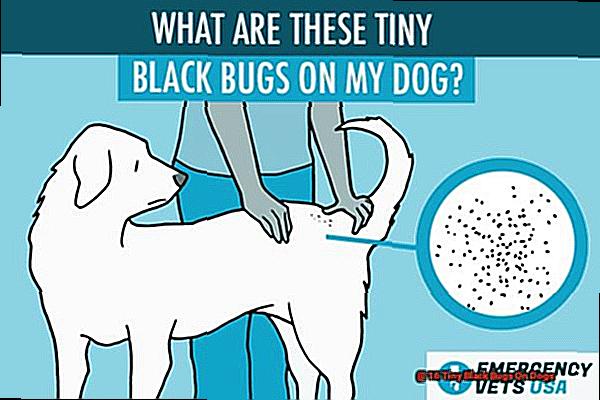
Decrease Tick Habitat in Your Yard
Ticks thrive in moist and wooded areas, so reducing their habitat in your yard is essential. Keep grass and shrubs trimmed, remove any leaf litter or debris, and create a barrier between your yard and wooded areas using gravel or wood chips. This will make it less appealing for ticks to enter your yard.
Wear Protective Clothing
When exploring areas with high tick populations, such as woods or fields, it’s crucial to protect yourself and your dog. Cover your skin with long pants and socks and tuck your pants into your socks for added protection. Additionally, use insect repellents containing DEET, picaridin, IR3535, oil of lemon eucalyptus, para-menthane-diol, or -undecanone to further repel ticks.
Treat Clothing and Gear
Ticks can easily latch onto clothing and gear, making it important to treat these items with products containing 0.5% permethrin.
Dark specks in the fur of a dog that are not fleas or ticks
Before jumping to conclusions, it is essential to understand that there are other potential causes for these dark specks. In this insightful blog post, we will delve into some of these causes and provide valuable tips on how to address them.
Flea dirt, or the excrement of fleas, is a common culprit of dark specks in a dog’s fur. However, it is not the sole offender. Demodex mites, tiny parasites that can cause skin irritation and inflammation, can also lead to the appearance of dark specks. If left untreated, these mites can result in Demodectic mange, characterized by hair loss and thickened skin.
Seborrhea, a skin disorder that causes excessive production of sebum, the natural oil that keeps the skin moisturized, is another potential cause of dark specks in a dog’s fur. When sebum mixes with dirt and dead skin cells, it can form dark clumps or scales in the fur. This condition can also cause itching and inflammation.
Apart from flea dirt and mites, allergies (both food and environmental) can also contribute to the presence of dark specks in a dog’s fur. Additionally, fungal or bacterial infections can have similar symptoms. It is crucial to consult a veterinarian for proper diagnosis and treatment.
Interestingly, even environmental factors such as exposure to pollution or chemicals can lead to dark specks in a dog’s fur. Therefore, it is vital to be mindful of your dog’s surroundings and limit their contact with potential irritants.
Black dots on a dog’s skin
These irritating specks can vary from diminutive freckle-like marks to elevated dark masses and can materialize anywhere on a dog’s physique. As a specialist in animal well-being, I have witnessed numerous instances of black dots on dogs’ dermis and have recognized some prevalent reasons.
In this blog post, I will share my expertise and experience to aid you in comprehending the causes behind these spots and how to manage them.
Dermal malignant melanoma
One of the most severe reasons for black dots on a dog’s dermis is dermal malignant melanoma. This is a form of dermis cancer that manifests as somber pigmentation and raised mass on dogs’ skin, particularly in areas where the fur is thin. Breeds that are more susceptible to this type of cancer include Schnauzers, Scottish Terriers, and Cocker Spaniels.
If you detect any dubious dark spots or masses on your furry companion’s dermis, it is crucial to have them examined by a veterinarian promptly. Early detection and treatment can substantially enhance the likelihood of a successful cure.
Lentigines
Lentigines are another prevalent cause of black dots on a dog’s dermis, often misinterpreted as cancerous growths. These freckle-like spots are generated by overactive melanocytes in the dermis and are usually harmless. They can manifest in various hues, including somber, brown, grey, or even pink.
Lentigines are more frequently observed in older canines and do not necessitate any treatment unless they induce irritation or alter in appearance. However, it is always prudent to have your veterinarian inspect these spots to disqualify any potential health concerns.
Chronic inflammation, hormone-associated disorders, or skin damage
In certain instances, black dots on a dog’s dermis can arise from chronic inflammation, hormone-associated disorders, or skin damage.
Black dots or freckles on dog skin: Lentigines
Lentigines are small, dark spots or freckles that can appear on a dog’s skin. They are the result of an increase in melanin production, the pigment responsible for giving color to the skin, hair, and eyes.
These spots are most commonly found in older dogs, especially those with light-colored fur or skin.
However, they can also occur in younger dogs and may be more noticeable on those with dark fur.
The appearance of lentigines can be influenced by various factors such as sun exposure, genetics, hormonal changes, and age. They can also develop due to certain medications or medical conditions. While most lentigines are harmless and do not require treatment, it is important to have a veterinarian check any sudden changes in shape, size, or color.
Black dots or freckles on a dog’s skin can appear anywhere on the body but are most commonly found on areas exposed to the sun, such as the nose, ears, and belly. They can also develop in areas where there is friction or rubbing. It is crucial to note that lentigines are not contagious and cannot be passed from one dog to another.
If you notice lentigines on your dog’s skin, it is important to consult with a veterinarian for reassurance and to rule out any underlying health problems. In most cases, no treatment is necessary. However, if the spots are causing discomfort or affecting your dog’s quality of life, a veterinarian may recommend laser treatment or cryotherapy to remove them.
Prevention is key when it comes to lentigines. Limiting your dog’s sun exposure and providing shade when outside can help reduce the development of these spots.
Tiny black dots on dog skin that look like dirt that won’t wash off.
The perplexing and troublesome issue of tiny black dots on a canine’s dermis that resemble dirt is a source of frustration for numerous pet proprietors. Not only do these spots mar the aesthetic appeal of your beloved companion, but they can also prove challenging to eradicate. In this segment, we will delve into the potential causes of these vexatious dots and provide effective solutions for pest control in your dwelling.
Potential Causes of Tiny Black Dots on Dog Skin:
Fleas:
Fleas are a prevalent source of tiny black dots on a canine’s dermis. These pesky parasites feed on your furry friend’s blood and leave behind dark, gritty droppings that bear an uncanny resemblance to dirt. These minuscule particles can be found on your dog’s epidermis, coat, and even their bedding.
Ticks:
Ticks are another common offender for the appearance of black dots on a dog’s skin. These arachnids attach themselves to your pooch’s skin and feast on their blood. As they gorge themselves, they may deposit dark, crusty spots that mimic dirt.
Mites:
Microscopic parasites known as mites can also cause various skin afflictions in canines, including the emergence of tiny black dots. These minuscule creatures burrow into the skin and lay eggs, leading to irritation and inflammation.
Dirt:
Although it may seem obvious, at times, the cause of tiny black dots on a dog’s dermis is nothing more than dirt. Dogs have an affinity for rolling around in the dirt, and it can easily become trapped in their fur, resulting in the appearance of dark spots.
Allergies:
Similar to humans, dogs can also experience allergies that manifest as skin issues. Sensitivities to particular food items, plants, or environmental elements can trigger the development of small black dots on the dermis.

